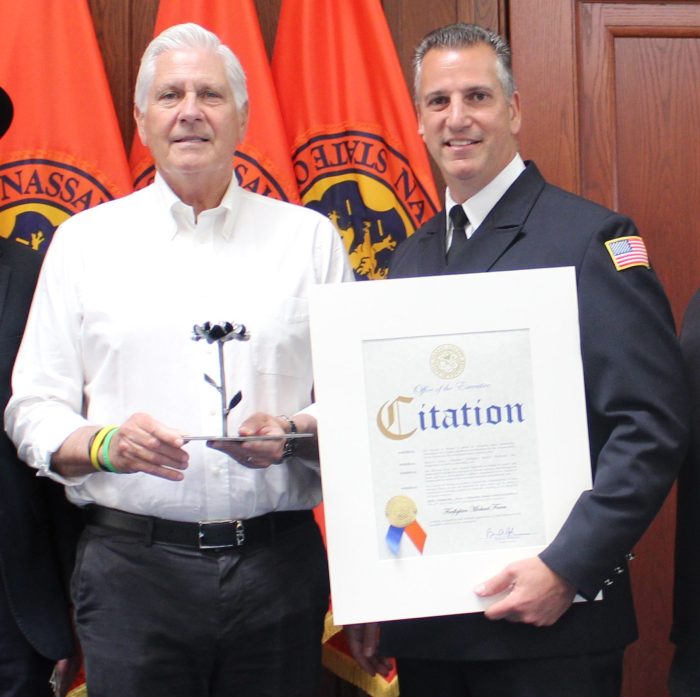The Death and Life of Great American Cities
A plan to build a new skyscraper near the Empire State Building has antagonized urban esthetes who view the construction as graceless, unnecessary and out of place.
Interesting enough, the Empire State Building itself was the subject of controversy when it was constructed in 1931, just subsequent to the sky-high stock market falling to earth in a flaming wreck. Throughout the decade, the 102-story skyscraper was as famous for its notorious vacancies as it was for the mythical King Kong having climbed it. Detractors pilloried it as the “Empty State Building” as tenants sought more affordable locations to do business in a bleeding economy.
I began to think about cities, New York City in particular, its greatness and unparalleled vitality that almost vanished in the social and economic chaos that had crippled it just 20 years earlier. But all that changed when Sheriff Rudolph Giuliani came to town and cleaned up Dodge. From the drug and pimp infested sewer it had become, Times Square was transformed into a family-friendly place, Central Park a re-polished gem and crime collared so completely after years of virtual anarchy that Manhattan became the safest big city in America.
Clearly law and order pays dividends and is an essential ingredient in the birth and rebirth of any great city. But what else is involved? I first considered this question when I read Robert Caro’s masterpiece, The Power Broker, about the life and times of Robert Moses, New York’s master builder. The book is a tome weighty enough to sink a small rowboat but it is a riveting and engrossing read. No earthquake, volcanic eruption or mighty avalanche more monumentally changed the New York landscape than that force of nature called Robert Moses.
Autocratic, brilliant and bursting with unfathomable energy, Moses was the New Deal’s loudest trumpet blast for centralized state authority, which believed that development was the exclusive domain of public officials who knew far more than the masses on what was needed for their own good. It ushered in large scale, government-funded public works to improve and modernize the city of which there was no more enthusiastic proponent than Mr. Moses. By the 1960s, along with the World’s Fair (another Moses brainchild) a labyrinth of roads, public buildings, playgrounds and beaches dotted the Empire State. Marvels of 20th-century engineering came in the form of bridges that majestically spanned the city boasting massive steel beams and regal, towering arches: The Whitestone, the Throgs Neck, George Washington, Bayonne and Triborough, as well as the awe-inspiring Verrazano-Narrows Bridge, whose towers soared 70 stories high from the water below and stretched so long that the curvature of the earth was factored into the equation in order to construct it.
Even today, we rely on the infrastructure that Moses created but these achievements hardly insulated him from public scorn; he was despised then and the residual hostility of his willfulness to remake the city in his own Godlike image still, a half century later, radiates unabated. His critics argued that Moses’ gigantic urban renewal projects and road and bridge building undermined the unique fabric of the city, displaced thousands from the poor and minority populations, prioritized the automobile at the price of public transit and dehumanized the city with a grotesque and senseless modernization.
Opposing the Moses weltanschauung was the urban theorist Jane Jacobs, urbane, sophisticated and like Moses, possessed a scintillating intellect. Unlike Moses, she had literary talents to marshal her case for small-scale urban life as well as the political savvy to organize a grassroots movement to stymie Moses’ well laid-out plans for the West Village. Born in 1916, a full generation after Moses, she put her soul in what would become her Magnum Opus, The Death and Life of Great American Cities. Using her beloved Greenwich Village as a universal yardstick, she extolled the virtues of modeling urban life upon its elegant, sensible and pleasing characteristics.
Her influence would prove to be as deep and wide as the heavens above. Today, city planning and urban development are preponderantly affected by the philosophy of Jane Jacobs, Moses having been denominated as the proverbial villain in this murky plot. Academics, architects and builders from all over the country make pilgrimages to zoning and planning seminars that are perennially paying homage before the sacred shrine of Jane Jacobs. She largely deserves, in my judgment, the adulation of her admirers of which I am unabashedly one — but not unquestioningly so.
Politically she is well insulated; for while her liberal sentiments were plain and unmistakable, she transcended ideological barriers by managing to champion the cause of the disenfranchised while intellectually unsheathing the sword of Death and Life of Great American Cities which was, at its core, a powerful anti-statist polemic. So her pedigree allowed her to bridge both the left and right of the political spectrum, the former by defying the cold, impersonal forces of capitalism run amok with venture capitalists building expressways through SoHo and the Lower East Side but at the same time opposing the kind of big government fiat that would trample on property rights.
Her opposition to an automobile-centric city, advocating short blocks, narrow streets, utilizing old buildings and the need for little shops all promoted variety, economic vitality and social cohesion (of which ordinary people were the architects) have become among the noblest blessings of city life and has invested her among small scale, people oriented planners, with an almost saintly quality. Meanwhile, Moses’ Procrustean dispositions, his acerbity, elitism, bureaucratic muscle and lust for public domain where he, as an unelected official, crushed opposition under his merciless heel are ripe for public caricature.
These impulses, however, overstate the case for Jacobs. The world, it seems to me, is large enough to accommodate both. One can honor Jacobs’ prescience without impregnating her with omniscience, as unquestioning devotees are prone to do. Jacobs, after all, got it wrong when she predicted, with Delphic certainty, that Lincoln Center would be an abysmal failure. Instead, it’s one of the jewels of the city that heroically revitalized the Upper West Side.
When all we have for creative redevelopment these days is building another tiresome baseball stadium at considerable taxpayer’s expense, there is a yearning for the excitement of yesteryear. Moses had vision, a fertile imagination and the intestinal fortitude to make dreams a reality. We could use a little dose of that today as the still largely vacant hole at Ground Zero in downtown New York sadly and pathetically reminds us. Prohibitions on development have unwelcomed consequences creating, as it does, a sterile and unresponsive business environment that I don’t think Jacobs, for all her staggering insights, fully appreciated.
Whether we need another skyscraper in midtown is scarcely the point. What we need to focus on is what works in public spaces, what appeals to city dwellers and businesses, what designs will generate new industry, create employment and make people want to live, work and invest here rather than flee from what was, and still is, the cynosure of the civilized world.
































